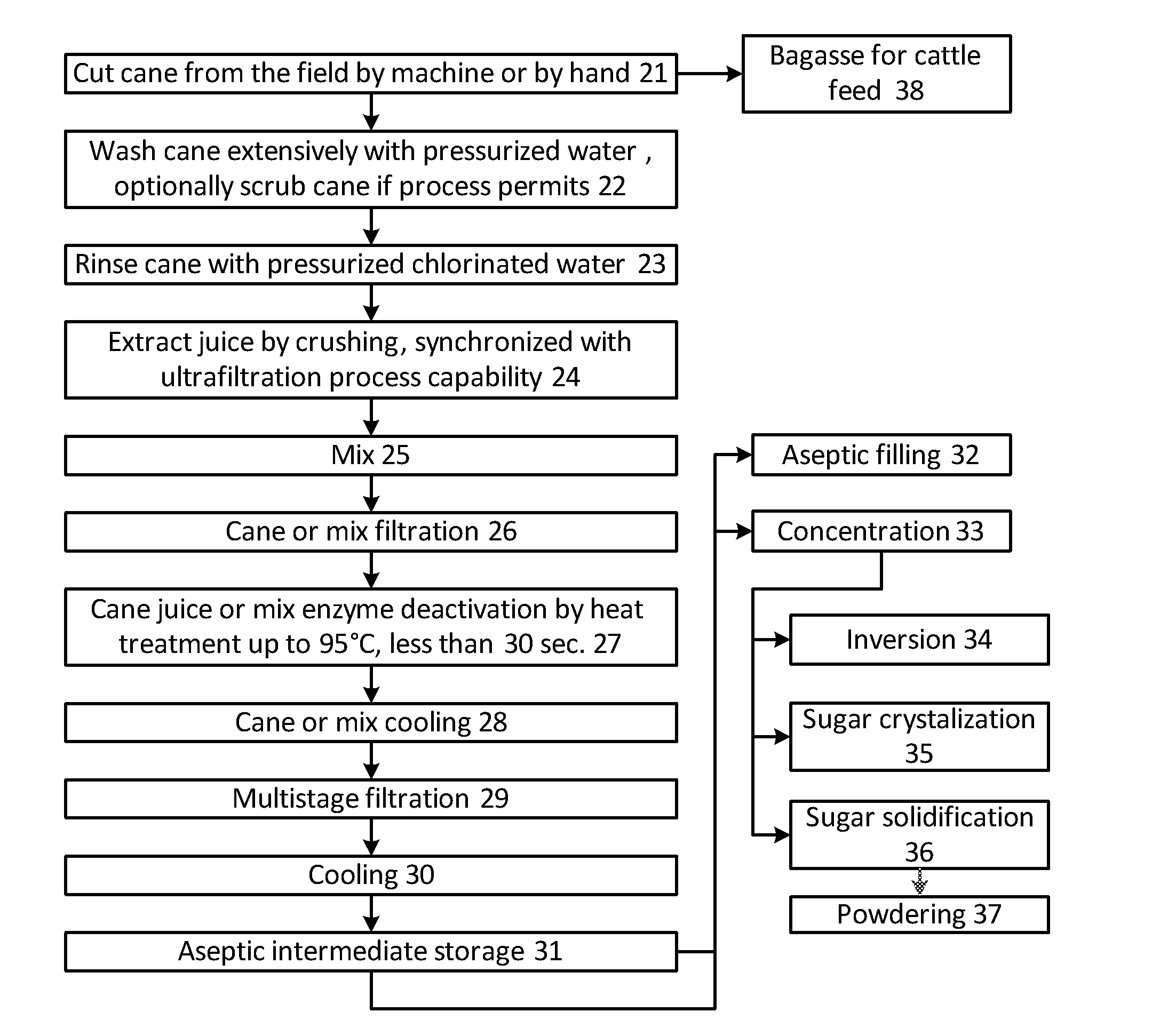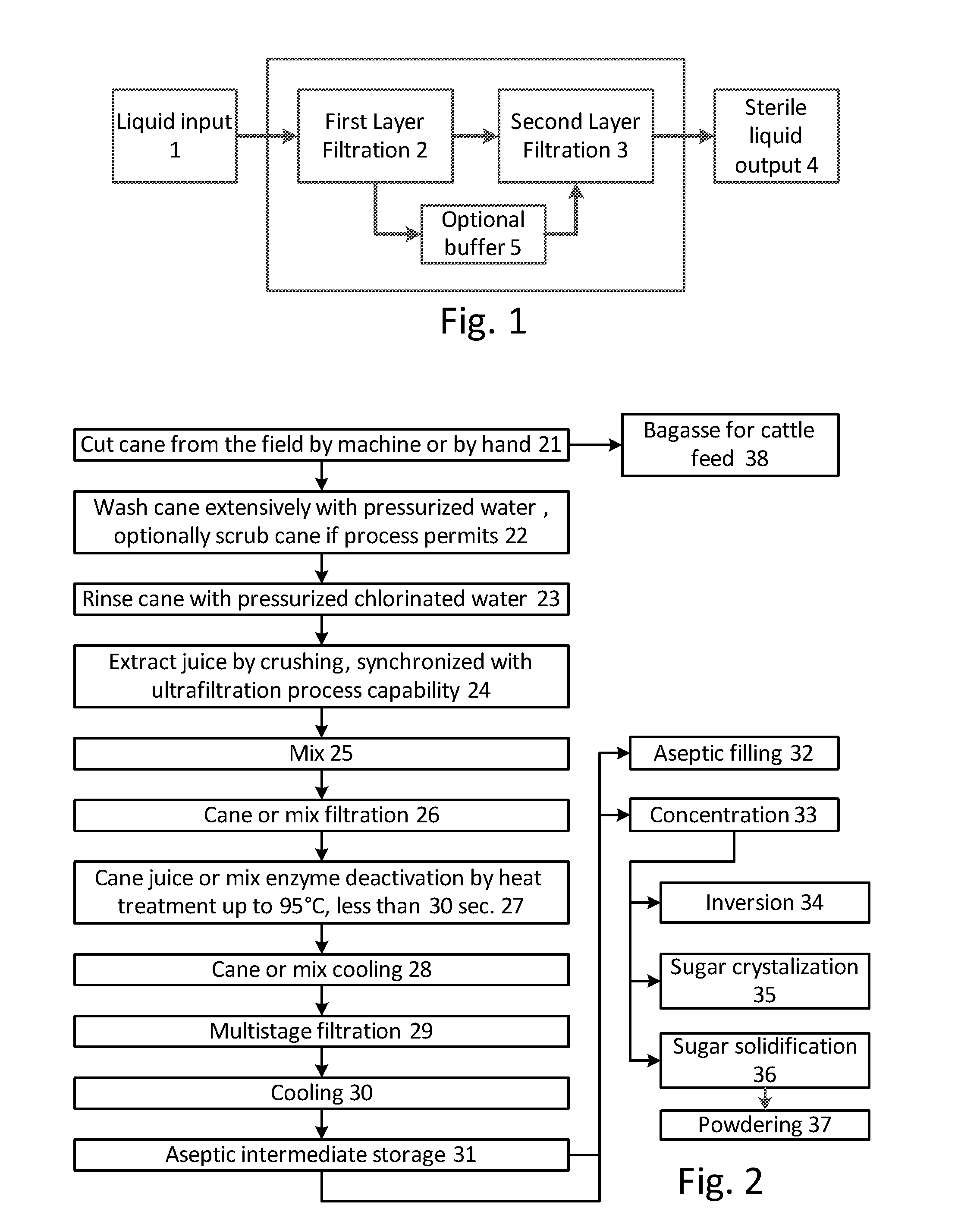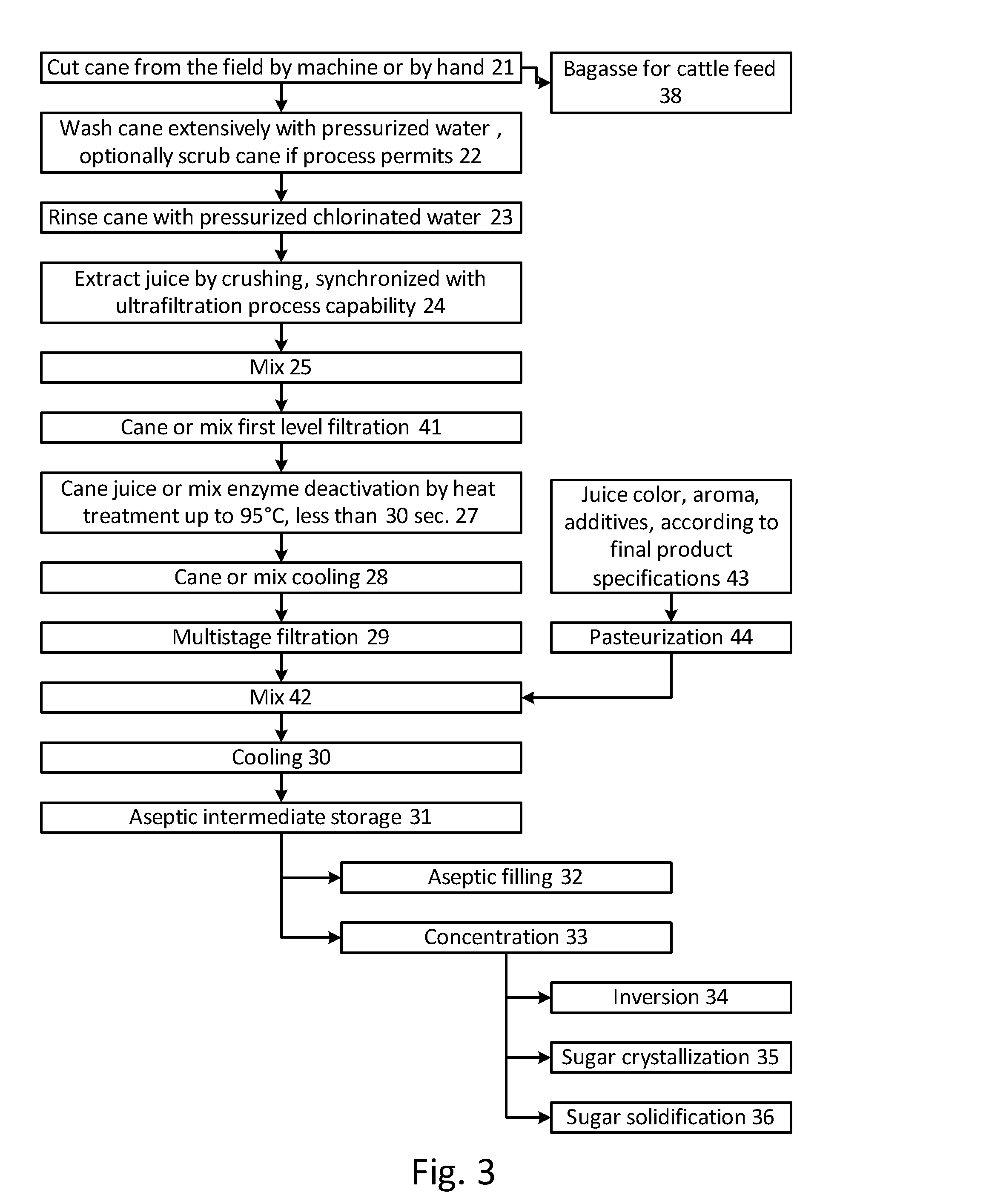System and method for preparing a shelf-stable botanical extract
- Summary
- Abstract
- Description
- Claims
- Application Information
AI Technical Summary
Benefits of technology
Problems solved by technology
Method used
Image
Examples
Embodiment Construction
[0048]FIG. 1 shows a process flow diagram including a two stage filtration process for purifying a botanical liquid. The botanical liquid is obtained by pressing or shredding, yielding a relatively contaminated crude liquid. The juice may be prefiltered to remove large pieces, fibers, pulp, etc. The juice liquid input 1 is fed to a first filter 2, which is a 0.05-0.14 μm pore cross flow filter. The filtrate is then fed directly to a second stage filter 3, which is also a 0.05-0.14 μm pore cross flow filter, or held in an intermediate storage tank 5 and then passed to the second stage filter 3, before exiting the process as a sterile liquid output 4. The double-filtered filtrate is reasonable sterile, and is storage stable at room temperature, e.g., for over six months.
[0049]The process outlined does not require heat treatment to achieve storage stability, though a small amount of heat treatment may be employed to deactivate enzymes in the juice that might degrade the product over ti...
PUM
 Login to View More
Login to View More Abstract
Description
Claims
Application Information
 Login to View More
Login to View More - R&D
- Intellectual Property
- Life Sciences
- Materials
- Tech Scout
- Unparalleled Data Quality
- Higher Quality Content
- 60% Fewer Hallucinations
Browse by: Latest US Patents, China's latest patents, Technical Efficacy Thesaurus, Application Domain, Technology Topic, Popular Technical Reports.
© 2025 PatSnap. All rights reserved.Legal|Privacy policy|Modern Slavery Act Transparency Statement|Sitemap|About US| Contact US: help@patsnap.com



